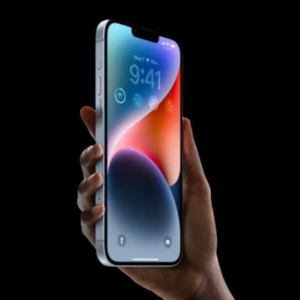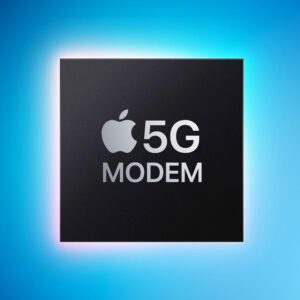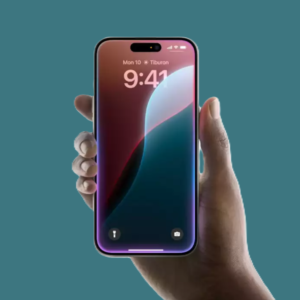iPhone SE 4 Major Design Overhaul
The anticipated release of the iPhone SE 4, expected in early 2025, is building excitement largely due to rumored design shifts and a key upgrade that could set it apart in Apple’s lineup. If the rumors hold true, this new model will be significantly different from its predecessors, drawing closer to the design and performance of more premium iPhones. While there are several updates to the SE 4 that have captured attention, one rumored change in particular—Face ID integration—is likely to have the biggest impact on how consumers view the SE lineup.
The iPhone SE 4 is set to feature a 6.1-inch OLED display, a major shift from the 4.7-inch LCD screen on previous SE models. This change not only boosts screen size but also promises to enhance display quality significantly. OLED technology, commonly found in higher-end models, offers deeper blacks, better contrast, and more vibrant colors compared to LCD. The rumored upgrade to an OLED screen could appeal to users who want a budget-friendly iPhone but appreciate the superior visual quality of Apple’s flagship models.
Switching to a 6.1-inch screen also aligns the iPhone SE 4 with Apple’s full-screen design trend, effectively retiring the smaller and more compact design previously associated with the SE series. This move may be a disappointment for fans of smaller phones, but it reflects Apple’s broader strategy to unify the appearance of its devices. By adopting a size and design close to the iPhone 14, the SE 4 stands to become a mid-range option that merges affordability with the modern design language of Apple’s recent offerings.
- Unboxing iPhone SE 4— Latest Rumors and Features We’re Hoping For
- iPhone SE 4 Leak Hints at a Second Model, Surprising Apple Fans
Goodbye, Home Button: Embracing Face ID

One of the most talked-about updates for the iPhone SE 4 is the removal of the Home button and the shift from Touch ID to Face ID. This shift would make the SE 4 the first SE model to ditch the fingerprint sensor in favor of facial recognition, a feature typically reserved for Apple’s more premium iPhones. The addition of Face ID is significant because it enables the SE 4 to adopt the full-screen design Apple uses on its flagship devices, eliminating the large bezels that previously housed the Home button.
Face ID offers a seamless, hands-free unlocking experience that many users find convenient and secure. However, some users have a strong preference for Touch ID, especially those who find facial recognition less reliable in various lighting conditions or who value the tangible feedback of a physical button. Nevertheless, Apple’s move to bring Face ID to the SE series is likely aimed at creating consistency across its iPhone lineup while gradually phasing out Touch ID in favor of a more modern interface.
Performance and Hardware: A Possible A18 Chip and Apple 5G Modem

Another rumored upgrade for the iPhone SE 4 involves its internal performance. Reports suggest that Apple may equip the SE 4 with the A18 chip, the same chip found in the upcoming iPhone 16 series. This would bring the SE 4’s performance on par with flagship models, a rarity for a budget device. The A18 chip, expected to offer substantial improvements in processing speed and efficiency, would make the SE 4 more capable of handling intensive applications and software updates, extending its longevity for users who prefer to keep their phones longer.
In addition to the upgraded chip, the iPhone SE 4 is expected to feature Apple’s own 5G modem, potentially providing faster and more reliable network performance. Apple’s move toward self-developed 5G modems reflects its intent to streamline its supply chain and potentially reduce costs, which could keep the SE 4 affordable despite its advanced features. Faster 5G capabilities would further enhance the phone’s appeal, especially as 5G networks become more widespread globally.
What the Design Shift Means for Apple’s Lineup

The SE series has traditionally been Apple’s option for users seeking an iPhone with a familiar design and reasonable price tag. But with these new updates, Apple appears to be rethinking the SE line to cater to a wider audience. By blending advanced features like Face ID, OLED displays, and an edge-to-edge screen with a budget-friendly price, Apple is strategically positioning the SE 4 as an entry point into its ecosystem for users who want premium features without the flagship price.
These changes also reflect a broader trend in the smartphone market: users increasingly expect mid-range devices to perform similarly to high-end models. With the iPhone SE 4, Apple seems to be betting that its loyal user base will appreciate having a model that combines the SE line’s affordability with the aesthetics and functionality of the newer iPhones.
The Bottom Line: Is the Face ID Shift the Game Changer?
While the larger OLED display, A18 chip, and Apple’s 5G modem are notable upgrades, Face ID integration is perhaps the most transformative. By incorporating Face ID and removing the Home button, the SE 4 breaks away from the “retro” look of previous SE models, giving it a more premium feel. This change alone positions the SE 4 as a more versatile, modern device that will attract users who may have previously overlooked the SE line due to its dated design.
In addition, the SE 4’s potential compatibility with Apple’s AI-driven features, rumored to require Face ID as part of a more integrated iOS experience, could further justify the change. Face ID is not just a biometric tool but a gateway to Apple’s vision of a seamless, gesture-driven interface. As more of Apple’s ecosystem relies on Face ID for security, authentication, and personalization, introducing it to the SE line ensures a more unified experience across all iPhone models.
The iPhone SE 4 is shaping up to be Apple’s most ambitious entry-level iPhone yet, offering a mix of new technology and design updates typically reserved for premium models. The rumored upgrades are set to attract a broader range of users while showcasing Apple’s ability to pack value into every tier of its smartphone lineup. Stay tuned with us on Instagram & Facebook for more info.

[…] iPhone SE 4 — Screen Sizes and Design Shine, but One Change Counts […]
[…] iPhone SE 4 — Screen Sizes and Design Shine, but One Change Counts […]